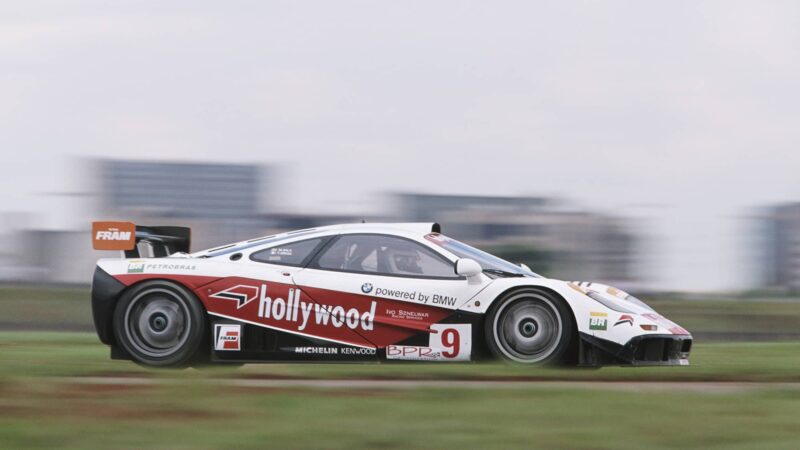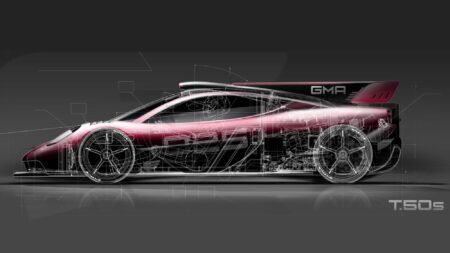A run of 25 T.50s racing cars will begin production in 2023 and feature even more power, greater precision and better aerodynamic efficiency than the road car.
Murray says that details are still being worked out for the future of his alternative series but that development of the T.50s was shaped with an eye on its future racing prospects.
“It’s worth building this car just to hear one come past on the track at 12,000 revs. I think a lot of people would enjoy that.
“This is quite different from the F1. The car that won Le Mans was very much just a racing version of the road car, it was never intended to go racing. This is something completely different.
“It was very different (the development process). The goals are different, the balance of trying to keep the car pretty and not have too many obvious aero systems and making the engine useful and driveable and a lot of space – a lot of that went into the road car.
“This has been a parallel activity to the T.50. Of course, the architecture of the monocoque and the suspension is T.50 but that’s where it really stops. It’s been an individual development all the way along. It’s a much more serious race car than a track car.
“The hope was, way back then I was talking to the FIA and the ACO about potentially supercar/GT series and that faded away, I don’t think they knew what they wanted, but it’s much more of an individual design racing car than the LM and the GTR were.
“It’s a pretty serious bit of kit. I had great fun, whereas I had to be very restrained with the road car to keep the shape pretty and balanced, but with the racing car we just let the wind tunnel dominate.”



